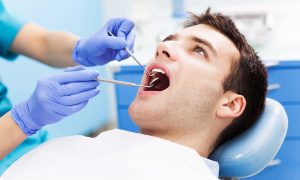Laser hair removal like that of laser hair removal Ellicott City MD is an excellent way to remove unwanted hair permanently. It is a painless, permanent solution for hairy skin. But there are some pros and cons. Listed below are some of these pros and cons. This procedure has the potential to cause scarring. However, some people are still wary of its risks. There are some risks involved with laser hair removal. Read on to learn more about this procedure.
Electrolysis
For permanent hair removal, electrolysis requires several treatments at regular intervals. Some people have good results with fewer sessions. Electrolysis treatments are usually scheduled four to six weeks apart. After the initial six sessions, maintenance treatments are administered. The frequency of maintenance treatments depends on the area and hair density. The procedure may require multiple sessions for large areas or a longer time interval. Nevertheless, once the process is complete, unwanted hair is gone forever.
For the procedure, the technician will insert a needle into the hair follicle and send an electrical current through it. Some patients experience a stinging or pricking sensation during the procedure. For the most comfortable electrolysis, take a pain reliever beforehand. After the treatment, apply ice to the area. The stinging and pricking usually subside after a few hours. In the meantime, you may wish to apply a moisturizer with soothing botanical oils. Most people can resume normal activities after electrolysis, but consult your dermatologist or physician if you have any questions.
Waxing
If you’re considering laser hair removal, you should stop waxing at least four to six weeks before your session. This is because waxing removes the entire hair follicle from the skin. Laser hair removal can only remove active hair, so new growth can occur. For dormant hair, you’ll need multiple treatments. Fortunately, there are methods for leaving follicles intact.
After your initial treatment, you should avoid waxing or plucking until your hair has fully regrown. While laser hair removal is permanent, new growth may occur during this time due to hormonal fluctuations. However, touch-up treatments are available to address the regrowth. Typically, laser hair removal requires six to eight sessions. For best results, space recurring treatments four to six weeks apart. Waxing or plucking the treated area should be avoided for a week after your initial session.
Before your appointment, shave the area that needs treatment. The less hair on your skin, the more comfortable the laser treatment will be. After the treatment, avoid waxing or plucking that area for at least two weeks. Waxing is also prohibited on the day of the treatment. You can buy a topical numbing cream at your local pharmacy to prepare for your appointment. Again, waxing should not be done on the day of your appointment.
Laser hair removal
If you’ve been considering getting laser hair removal for your body, you’ll likely be aware of the pros and cons of the procedure. While there are some risks, laser hair removal is generally safe. This is because it targets melanin, the pigment that causes hair to grow. Because this process targets the pigment, it’s best for darker hair types. However, some side effects can affect your experience, ranging from itching to burning. Even more serious side effects include blistering and infection.
One of the most popular pros of laser hair removal is the level of precision, with treatments affecting only the hair follicles. While laser hair removal can leave your skin irritated and red, it’s less painful than waxing. The pain level is comparable to that of a rubber band hitting your skin. Your laser technician may also apply topical anesthetics to make the procedure comfortable. However, there are many risks associated with laser hair removal, so it’s essential to know the risks and drawbacks of the procedure before you commit.
Electrolysis results in scarring
While laser hair removal has become a popular option for thinning facial hair, electrolysis can have side effects. Electrolysis, a popular method of hair removal, can cause scarring and inflammation if done incorrectly. Depending on your skin’s sensitivity, electrolysis may result in an electric shock. If your electrolysis provider is not a board-certified dermatologist, the risk of scarring is significantly reduced.
While electrolysis typically causes no pain, some side effects can occur. Temporary redness may occur after the procedure, but this is a short-term problem. People with darker skin may experience temporary dark spots that fade away. The procedure doesn’t typically leave scars, but it can cause scabbing after the treatment. The scarring may take six to twelve months to show ultimately.



